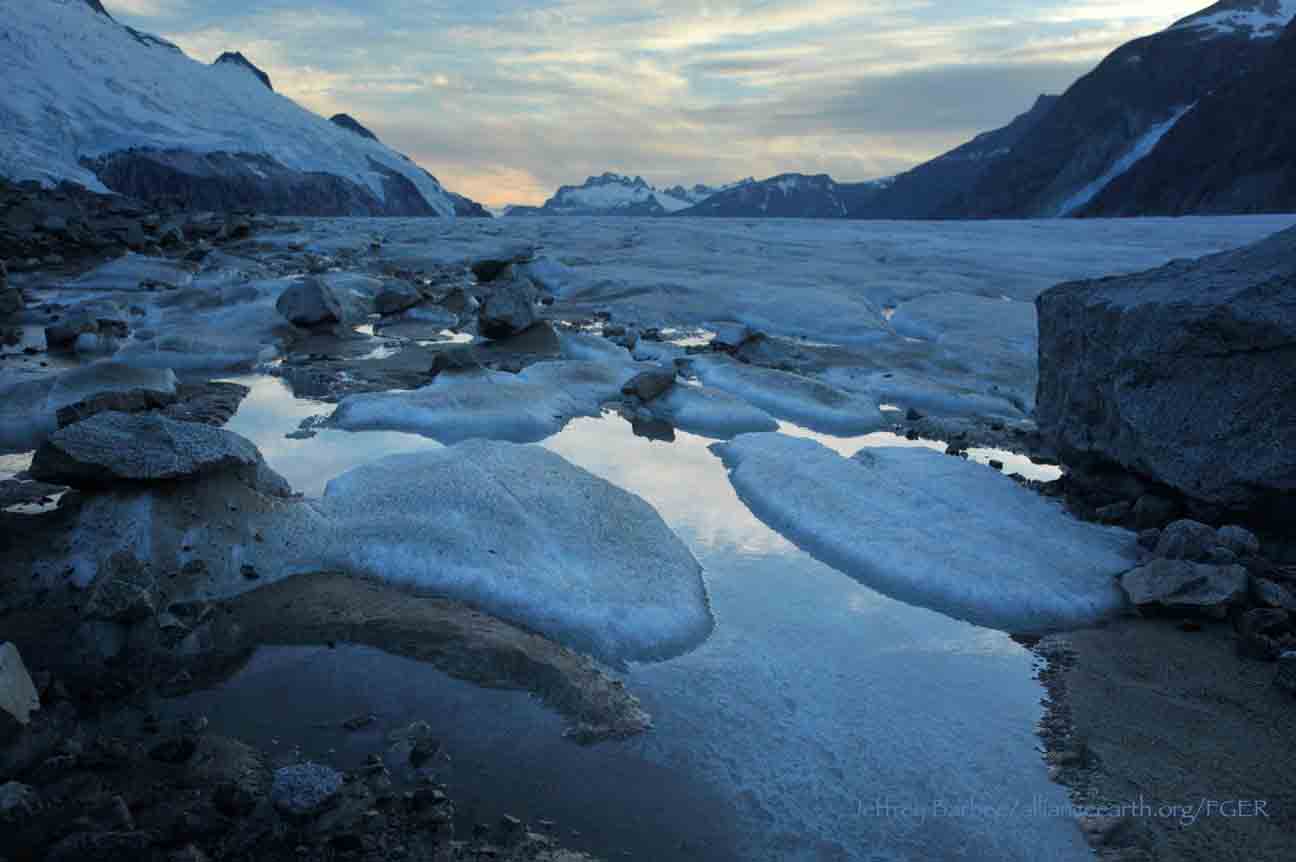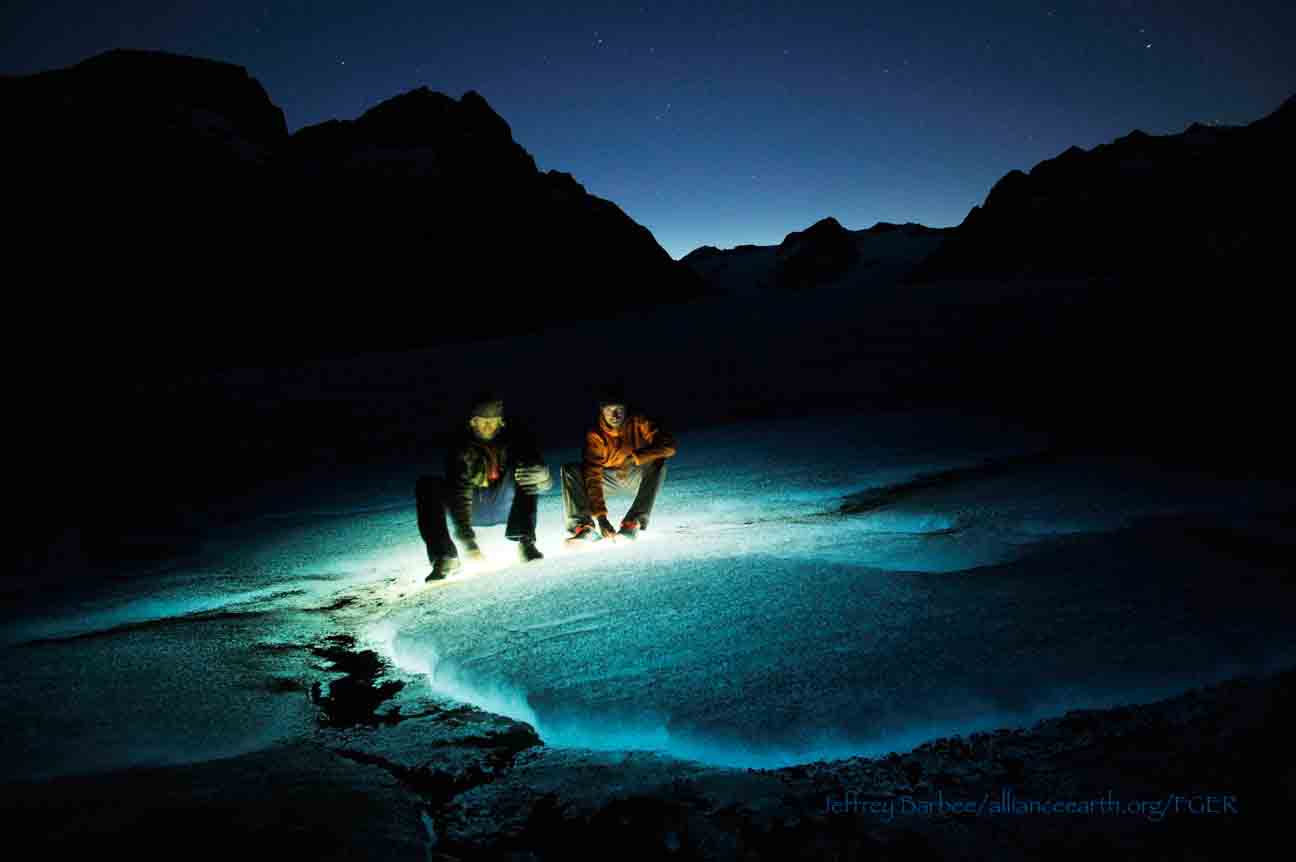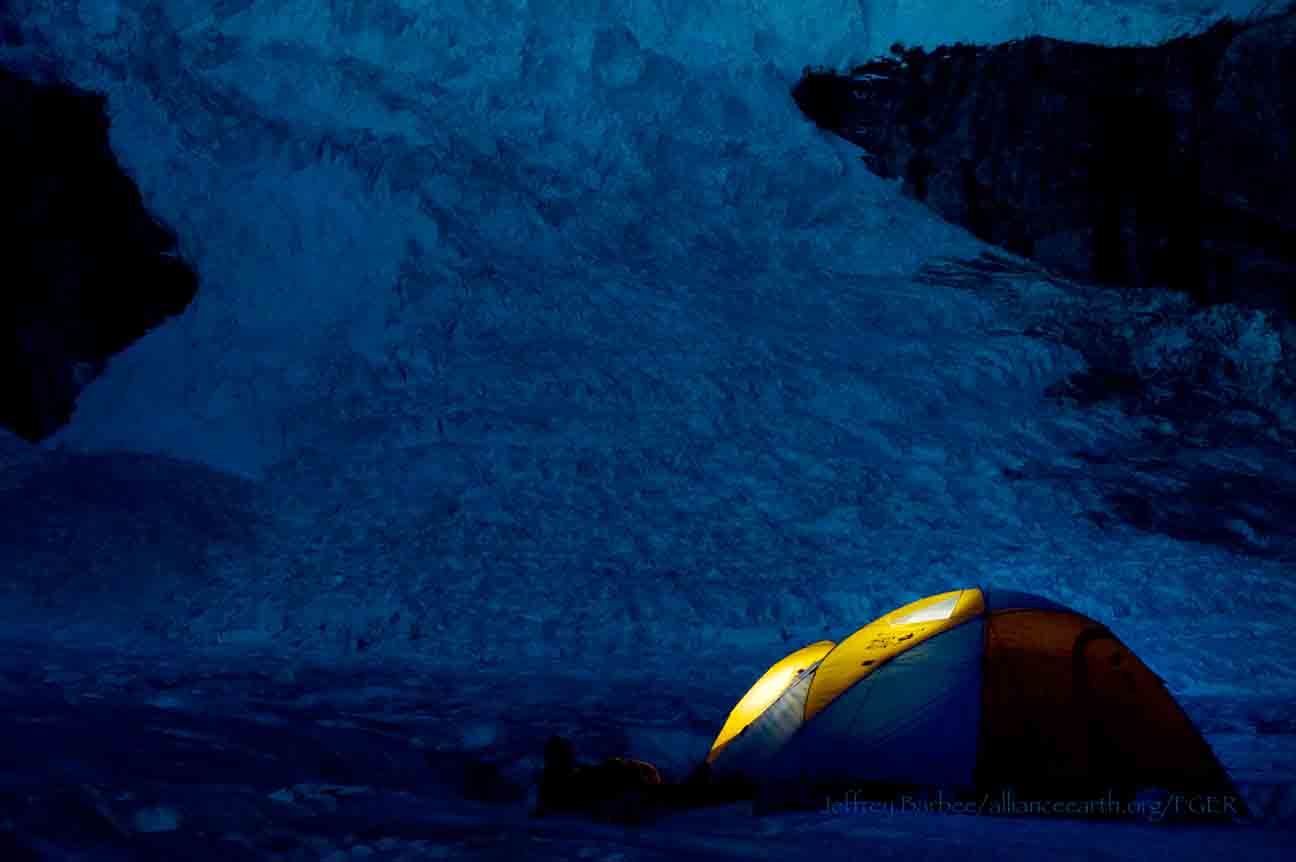2015 JIRP Student Project: Geobotany, Nunatak and Periglacial Ecology and Entomology
Faculty experts: Alan Fryday, Karen Dillman, Saewan Koh, David Hik, Sean Schoville, Polly Bass
Overview of Projects and Goals:
The ecological research of the Juneau Icefield Research Program is important on a global scale. The nunatak and periglacial habitats provide information on the impact of climate change on high latitude alpine habitats. Work to date has indicated a 68% species increase since the time of first historical work in nunatak habitats of this region.
Baseline observations allow for monitoring future changes. Threatened species, range extensions, and invasive species have been observed on the nunataks. Study of the periglacial and nunatak habitats of the Alaska-Canada Boundary Range allow for insights into the future of this biome, which are not available from other indicators.
Research themes include habit change, species assemblages; interactions between plants, animals, insects, and substrates. Abiotic variables including aspect, dominant wind direction, slope, precipitation, and lithology, among other factors are considered. Successional processes will be investigated in conjunction with Quaternary geomorphology and landform development in the periglacial environment. A model for species richness determinations, developed in previous research on the icefield nunataks will continue to be tested on previously uninvestigated nunataks. The data will be used to determine the validity of a hypothesis of nunatak biogeography as a corollary to the theory of island biogeography. Students will learn basic plant (vascular and nonvascular) identification techniques, ecological field research methodologies, data analysis techniques, sampling and project design, and collection and processing procedures. Students will contribute to and participate in ongoing research.
Specific Objectives and Possible Project Directions
A. Carry out vegetation surveys and observations on many nunatak sites, with some sites of special interest; Observe for changes in abundance and species composition; Improve the representation of Southeast Alaska in the flora of the herbaria of UAF and UAA.
B. Contribute to the data set to test the plant species richness per unit area model, revise and re-evaluate.
C. Observe for and record the presence of Festuca genus grasses, with interest in the presence of Neotyphodium. Observe for the presence of foragers. Prepare collections for genetic work.
D. Observe for, record and report the presence of species range extensions, invasive or exotic species, or fungi of interest, in particular, Taraxum sp. and Exobasidium karstenii.
E. Consider and observe interspecies and species substrate relationships, including observations for Nebria and Bambina genus beetles; foragers, including birds, other insects, animals; and plants.
F. Observe for the presence of Nebria sp. for studies on the dispersal of the species on the nunataks and within Northwestern North American mountain ranges. Collect Nebria, record detailed habitat observations, and prepare samples for genetic work.
G. Re-evaluate sites investigated by Henry Imshaug, survey, observe, record, and collect lichens. Carry out lichen and bryophyte baseline studies.
H. Assist with observation for and collection of Cryptogramma crispa, C. acrostichoides, and C. sitchensis for genetic work and study of the species dispersal since the LGM. Members of the fern genus Cryptogramma, are known by their common name as the ‘parsley ferns’. Prepare collections for genetic work.
I. Download and re-deploy digital temperature data loggers at select sites. Analyze this data in association with other variables. Consider influence of growing season length and variations in growing season on the habitats.
Timeline and logistics: Introductory information on methodology and identification will take place at the beginning of the summer and be reinforced and reviewed throughout the summer as we traverse the icefield. At least 2-3 days/week will be spent in the field. The ecology team will transport themselves, in most cases, to locations of interests. Students should expect at least 1 day per week in camp working on data analysis. New data will be collected, processed and preliminary interpretations made. Two or more overnight field trips may take place to sites such the Nugget Ridge area, Sunday Point and Brassiere Hills, possibly the Hole in the Wall and Twin Glaciers/ Camp 4 area, Juncture Peak and Shoehorn Peak area, Ivy Ridge, the Blob and/or F-10.
Possible conferences:
The Alaska Botanical Forum (will most likely be held in Fairbanks or Ketchikan in fall of 2015).
The Northwest Scientific Association Spring 2016 Conference, The Alaska Forum on the Environment Spring 2016 in Anchorage, The AISWG-CNPM(AK Invasive Species Conference) Fall 2015.
References:
Bjelland, T. 2003. The Influence of Environmental Factors on the Spatial Distribution of Saxicolous Lichens in a Norwegian Coastal Community. Journal of Vegetation Science(14) 4 525-534.
Cannone, N., Sgorbati, S., Guglielmin, M. 2007. Unexpected Impacts of Climate Change on Alpine Vegetation. Frontiers in Ecology and the Environment, 5(7):360-364
Halloy, S. R. P., & Mark, A. F. 2003. Climate-change effects on alpine plant biodiversity: A New Zealand perspective on quantifying the threat. Arctic, Antarctic, and Alpine Research. 35(2): 248-254.
Harvey, J.E. and Smith, D.J. 2013. Lichenometric dating of Little Ice Age Glacier activity in the Central British Columbia Coast Mountains, Canada. Geografiska Annaler: Series A, Physical Geography 95, p. 1-14.
Kammer, P. M., Schöb, C., and Choler, P. 2007. Increasing species richness on mountain summits: Upward migration due to anthropogenic climate change or re-colonisation? Journal of Vegetation Science. 18: 301-306.
Keeling, C.D., Chin, J.F.S. & Whort, T.P. 1996. Increased activity of northern vegetation inferred from atmospheric CO2 measurements. Nature. 382: 11 July, 146-149.
Koh, S. and Hik, D.D. 2007.Herbivory mediates grass-endophytes relationships. Ecology, 88(11); 2752–2757.
Koh, S. and Hik, D.D. 2008.Herbivory mediates grass-endophytes relationships Reply. Ecology, 88(12);3545-3549.
Smith, V. R., Steenkamp, M., & Gremmen, N. J. M. 2001. Terrestrial habitats on sub-Antarctic Marion Island: Their vegetation, edaphic attributes, distribution and response to climate change. South African Journal of Botany. 67: 641-654.
Walther, G.R., Beiβer, S., & Conradin, A. 2005. Trends in the upward shift of alpine plants. Journal of Vegetation Science. 16: 541-548.
Walther, G.R, Post, E., Convey, P., Menzel, A., Parmesan, C., Beebee, T. J. C., Fromentin, J. M., Hoegh-Guldberg, O., & Bairlein, F. 2002. Ecological responses to recent climate change. Nature. 416: 389-395.
Scherrer, D. and Körner, C. 2011. Topographically controlled thermal-habitat differentiation buffers alpine plant diversity against climate warming. Journal of Biogeography 38, 406–416.







